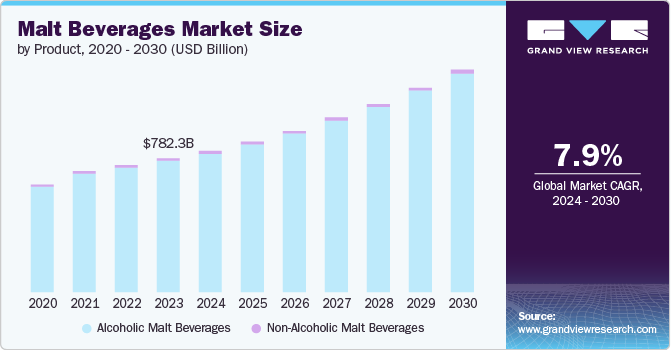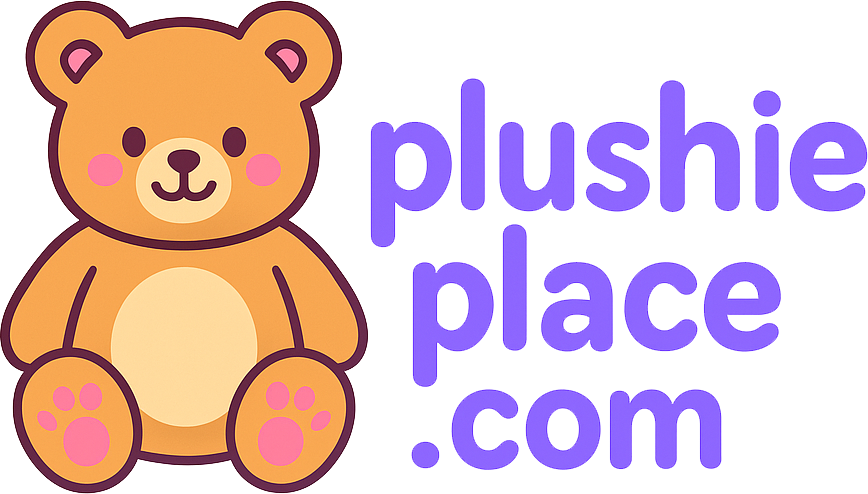Malt Beverages Market Boosted by Cross-Category Beverage Innovation

The global malt beverages market size was estimated at USD 782.25 billion in 2023 and is projected to reach USD 1,300.60 billion by 2030, growing at a CAGR of 7.9% from 2024 to 2030. The market is witnessing strong momentum due to shifting consumer preferences and innovative product developments. A growing number of consumers are exploring diverse and novel flavors, leading to the surge in flavored malt beverages (FMBs) and hard seltzers, which are being frequently introduced by brands aiming to meet evolving tastes.
Health trends are also shaping the market. Many health-conscious consumers are opting for malt beverages that are low in sugar and calories. Furthermore, the convenience of ready-to-drink (RTD) offerings and the increased appeal of premium brands with robust market visibility are reinforcing the growth trajectory of this industry. Research published in December 2023 by the Business of Drinks podcast noted generational differences in alcohol preferences—millennials generally favor beer and spirits, while Gen Z leans toward non-alcoholic cocktails. However, hard seltzers remain universally popular across both cohorts due to their light alcohol content and fruity taste profiles.
Since emerging into the mainstream around 2016, hard seltzers have quickly become a multibillion-dollar industry with over 300 brands by 2020. The segment continues to thrive, driven by niche flavor innovations and higher-alcohol content variants. Strategic investments further highlight this trend. In May 2021, Molson Coors committed USD 100 million to significantly enhance its production of spirit- and malt-based hard seltzers in Canada. The investment, which included the installation of advanced technology, led to a 300% capacity increase at its Toronto facility by early 2022, positioning the company to strengthen its hold on the Canadian market with key brands like Vizzy and Coors Seltzer.
Malt-based RTD options such as Cayman Jack Margaritas and Clubtails are gaining traction, alongside hard teas, sodas, and seltzers. The preference for malt-based cocktails is also linked to regulatory constraints around spirit-based RTDs. Continuous product rollouts fuel this segment. For instance, in February 2024, Captain Morgan unveiled a new line of malt-based RTDs with four cocktail-inspired flavors—Pineapple Daiquiri, Strawberry Margarita, Passionfruit Hurricane, and Mango Mai Tai—each with an ABV of 5.8%.
Order a free sample PDF of the Malt Beverages Market Intelligence Study, published by Grand View Research.
Key Market Trends & Insights
- North America held a revenue share of approximately 21% in 2023.
- The U.S. market alone represented around 73% of the North American segment in 2023.
- Alcoholic malt beverages dominated the product segment with a 98% share in 2023.
- On-trade distribution channels accounted for roughly 50% of total market sales in 2023.
Market Size & Forecast
- 2023 Market Size: USD 782.25 Billion
- 2030 Projected Market Size: USD 1,300.60 Billion
- CAGR (2024–2030): 7.9%
- Largest Regional Market: North America
Key Malt Beverages Company Insights
The malt beverages market remains fragmented, with numerous companies striving to capture greater market share through targeted strategies including acquisitions, product innovations, and strategic marketing. For instance, in January 2024, Asahi Europe & International acquired Octopi Brewing, a prominent contract beverage producer in Wisconsin. This move supports Asahi's long-term goals for sustainability and geographic expansion, particularly in the U.S. and Canadian markets.
Key Companies in the Malt Beverages Market
- Boston Beer Company, Inc.
- Anheuser-Busch InBev
- Heineken N.V.
- Carlsberg Group
- Molson Coors Beverage Company
- Diageo plc
- Kirin Holdings Company, Limited
- Asahi Group Holdings, Ltd.
- BrewDog plc
- Constellation Brands, Inc.
Explore Horizon Databook – The world's most expansive market intelligence platform developed by Grand View Research.
Conclusion:
The global malt beverages market is on a robust growth path, fueled by innovation in flavors, evolving health trends, and the expanding range of alcoholic and non-alcoholic offerings. Ready-to-drink formats, hard seltzers, and hard teas continue to disrupt traditional segments, while non-alcoholic beers tap into the wellness movement. With strong regional demand and significant corporate investments, the market presents ample opportunities for established players and new entrants alike. As consumer preferences continue to shift toward healthier and more personalized beverage experiences, the malt beverage industry is well-positioned for sustained long-term growth.
- Art
- Causes
- Crafts
- Dance
- Drinks
- Film
- Fitness
- Food
- Jocuri
- Gardening
- Health
- Home
- Literature
- Music
- Networking
- Alte
- Party
- Religion
- Shopping
- Sports
- Theater
- Wellness


